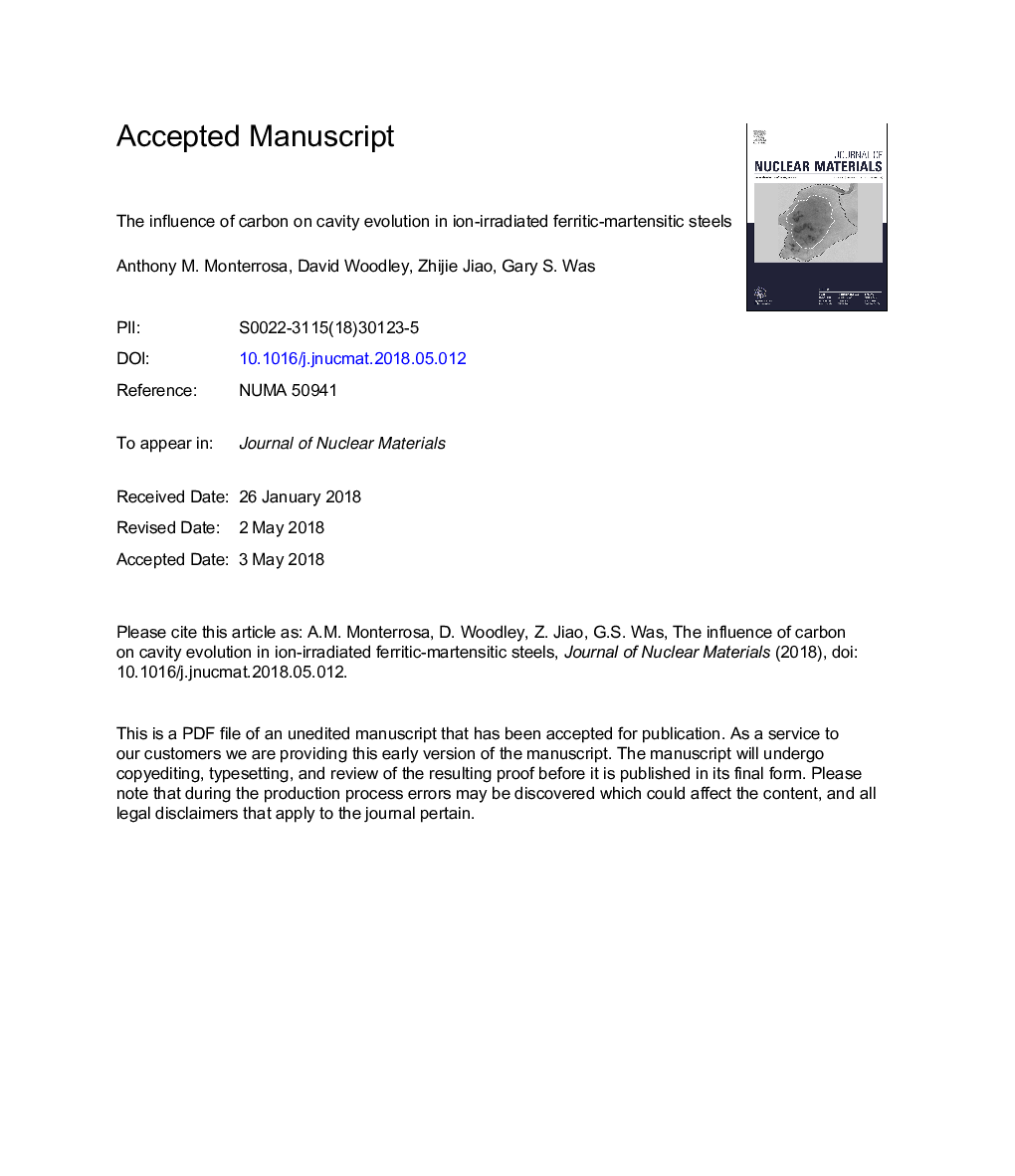| Article ID | Journal | Published Year | Pages | File Type |
|---|---|---|---|---|
| 11007002 | Journal of Nuclear Materials | 2018 | 30 Pages |
Abstract
Beam-induced carbon uptake has been discovered to occur excessively in high damage ion irradiation experiments. This uptake of carbon has the potential to compromise experiments which aim to emulate the effects of radiation damage. In this study, the effect of carbon on cavity evolution in ion-irradiated ferritic-martensitic steels T91 and HT9 was evaluated. Irradiations were performed with 5.0â¯MeV Fe2+ ions at 460â¯Â°C to damage levels up to 450 dpa. Some samples utilized a 100â¯nm alumina coating to prevent beam-induced carbon uptake. The T91 samples were pre-implanted with helium concentrations of 0, 1, 10, 100, and 1000â¯appm and the HT9 samples were irradiated in a dual-beam configuration with 5.0â¯MeV Fe2+ ions and energy-degraded helium up to 188 dpa, with He/dpa ratios of 0, 0.0006, 0.003, 0.015, and 0.2 appm He/dpa. Cavity evolution and carbide formation was characterized using TEM. The effect of carbon uptake on swelling and cavity evolution was evaluated by comparing the results of the samples which experienced excess carbon uptake to irradiated samples which experienced no carbon uptake. It was found that excess carbon suppressed swelling and distorted the role of helium on cavity evolution, regardless of helium injection method. The dissociation of helium bubbles led to a dramatic loss of bubble density at high helium levels by 450 dpa. Significant carbide formation contributed to the dissociation of helium bubbles by providing an alternate sink for emitted helium atoms.
Related Topics
Physical Sciences and Engineering
Energy
Nuclear Energy and Engineering
Authors
Anthony M. Monterrosa, David Woodley, Zhijie Jiao, Gary S. Was,
